They’re both capable in their own ways
Both Nissan and Toyota have been making reliable, capable, and relatively affordable SUVs for decades. Nissan always had a focus on the more rugged aspect of SUV ownership, focusing on four-wheel drive paired with a reliable, torquey motor (looking at you, old Pathfinders and X-Terras). Toyota’s the same, paving the way for other companies with the 4Runner, Tacoma, Hilux, and Land Cruiser. Aside from the muscular 4x4s, Toyota pretty much perfected the formula for versatile all-wheel drive SUVs and sedans. The RAV4, after the very first generation, came with full-time AWD systems and was very well known for its prowess in multi-season climates. When the Highlander was introduced, Toyota fans enjoyed a bigger but just as capable SUV for the family, without the heft of 4WD.
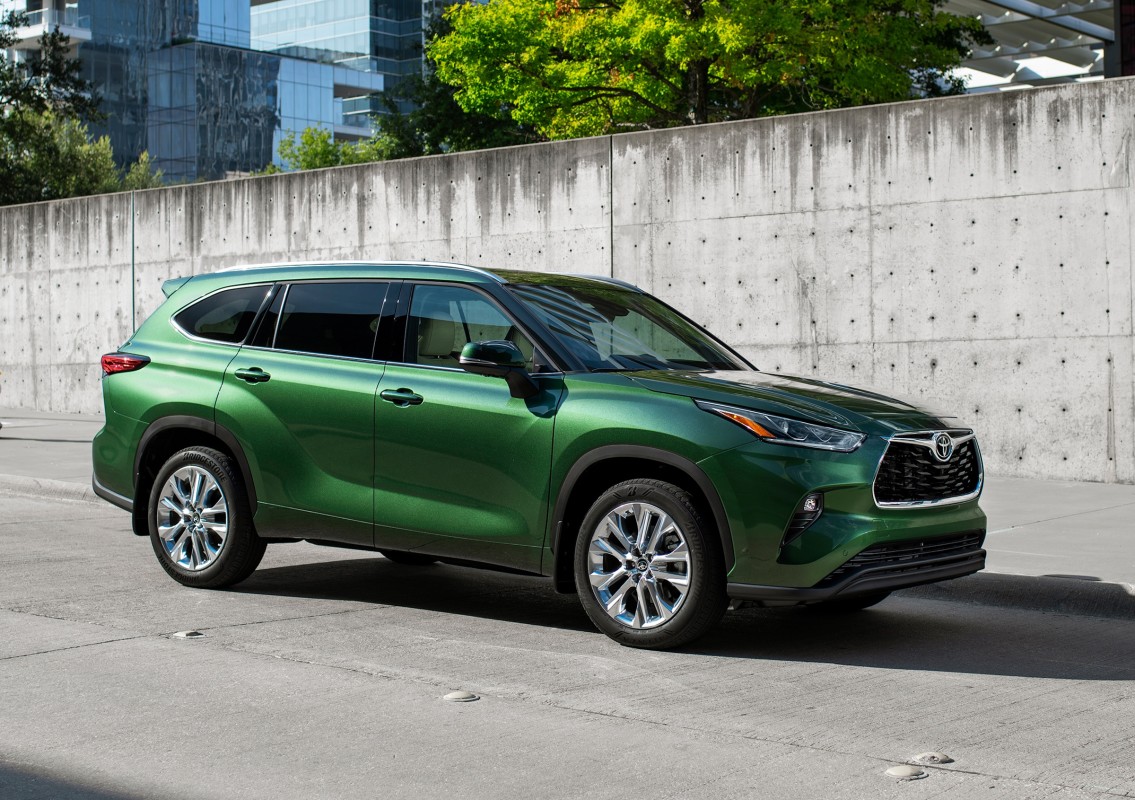
View the 2 images of this gallery on the
original article
Nissan’s story is very similar. The Pathfinder was introduced in 1987, and it was appealing to buyers for the same reasons as the 4Runner: it was competent, poised, relatively comfortable, and affordable for what you were getting. Of course, the two companies have competed for customers ever since, but they have refined their images a lot since the 1980s. The Rock Creek edition of the Pathfinder accentuates the SUV’s capabilities and amplifies a more off-road-ready look, while the Highlander’s design is sleek, with a focus on beauty and aerodynamics.
The Pathfinder has bigger muscles than the Highlander
In the age of hybridized turbo four-cylinder engines, the Pathfinder is one of the last full-sized SUVs with a meaty, 3.5-liter, naturally aspirated V6. It’s not made to be nimble, as it produces 295 horsepower and has 259 lb-ft of torque (11 more hp over the standard Pathfinder). Those numbers indicate it’s more of a quarter horse than a thoroughbred, designed to work and pull instead of boasting impressive mileage. Around Bend, Oregon, I was averaging around 19 mpg—but that does mean low speeds, frequent stops, and short-distance driving. Heading to Smith Rock State Park, however, I was getting around 23 mpg. Not bad for a full-sized SUV with a curb weight of 4,579 lbs, even with standard 4WD. The V6 was smooth and quiet, thanks to an 8-speed automatic transmission, which gives it a max towing rating of 6,000 lbs.
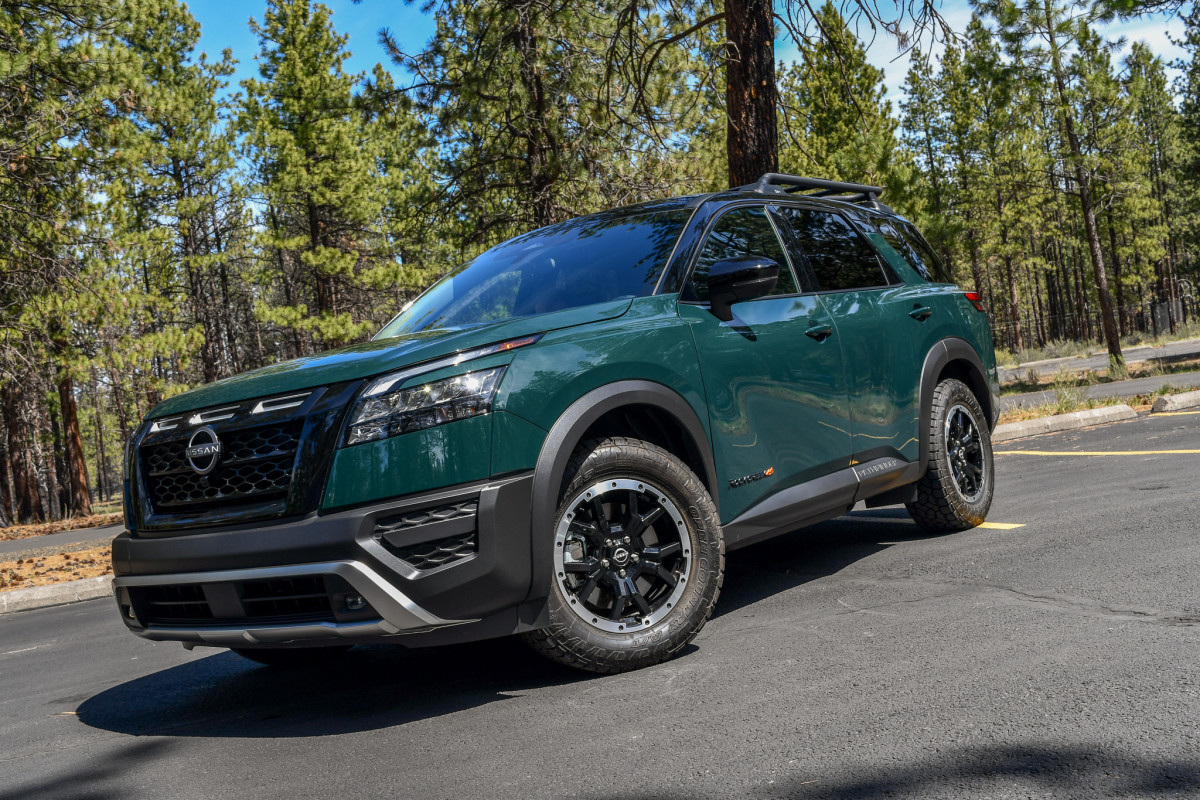
On the other end of the spectrum, the non-hybrid Toyota Highlander is fitted with a 2.4-liter turbo four that makes 265 horsepower and 310 lb-ft of torque. Those figures are adequate for a three-row SUV that weighs in at 4,155 lbs for the FWD version and 4,595 lbs when the optional AWD system is included. A smaller engine and a turbocharger help it get slightly better mileage, especially in the FWD setup. Most owners report close to 30 mpg combined when it’s FWD, and around 28 mpg as an AWD hybrid. But we’re here to talk about the gas version with AWD, which typically gets about 24 mpg combined, according to Toyota.
Size-wise, the Pathfinder is shorter than the Highlander by two inches, but has a wheelbase that’s longer by two inches. It’s taller than the Toyota by two inches, too, but both seat eight passengers. A longer body means more legroom in the third row and more overall cargo space, but not by much. The Pathfinder’s third row was more comfortable, and it had more legroom, but again, not by much. I’m about 5’8” and I had to sit sideways to fit my knees in either SUV. The Nissan’s second row, like the Highlander’s, can slide forward to increase leg room (as well as make the third row more accessible with the slide and tilt function), but even I wouldn’t want to be stuck in the third row for a road trip in either one. Otherwise, cargo space in both SUVs is very similar, with the Pathfinder having more cargo space behind the second and third row by around .5 inches or so.
Both are designed with intent, just not the same one
By now, you’ve noticed that the Pathfinder Rock Creek comes standard with a full-time “Intelligent” 4WD system, so it’s basically AWD until you lock the differentials, and the Highlander comes standard as a FWD SUV, but can be configured with an optional AWD system for a higher price. The Pathfinder, though, does allow drivers to select a 2WD mode to prioritize mileage. The Toyota is either FWD or AWD. No ifs, ands, or buts about it. To put it simply, the 4WD signifies it’s meant to tackle tougher trails, navigate a myriad of terrains, and get you out of a bind no matter where you are. The Toyota can do it, but it’s meant for grocery hauls and school drop-offs, with the option of AWD in case it’s snowing or raining. The Pathfinder can easily be a family hauler, but it’s built tougher.
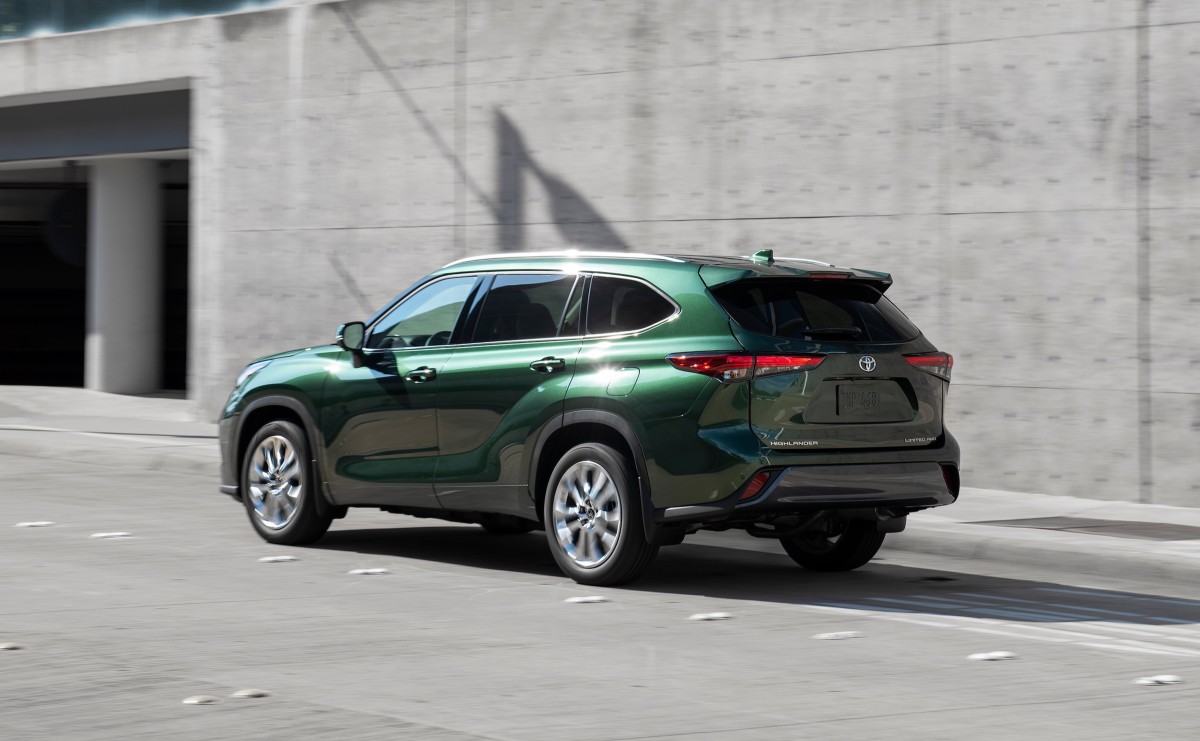
With that being said, the Rock Creek edition, strangely enough, has less ground clearance than the Toyota by an inch, but it comes from the factory with aggressive all-terrain tires, beadlock “style” wheels, more aggressive matte-black accent trimming, an all-black grille, and water-repellant leatherette material. Underbody protection, like skid plates, is standard, as well as tow hooks and hill descent control. The Highlander doesn’t have all that, because it’s much more family-oriented, with a focus on comfort and convenience rather than capability.
The Toyota’s interior can feature leather, and if it matters to buyers, the Toyota has a much bigger screen and a more tech-forward interior compared to the Nissan. The Nissan’s media screen is smaller than the Toyota’s by miles, and it doesn’t have wireless Android Auto/Apple CarPlay. You need to have a hard connection for it to activate, while the Toyota is wireless. I don’t ever mind that too much because the audio is clearer and the connections are much more reliable, but it does mean you need to make sure you always have a cord on you to use it.
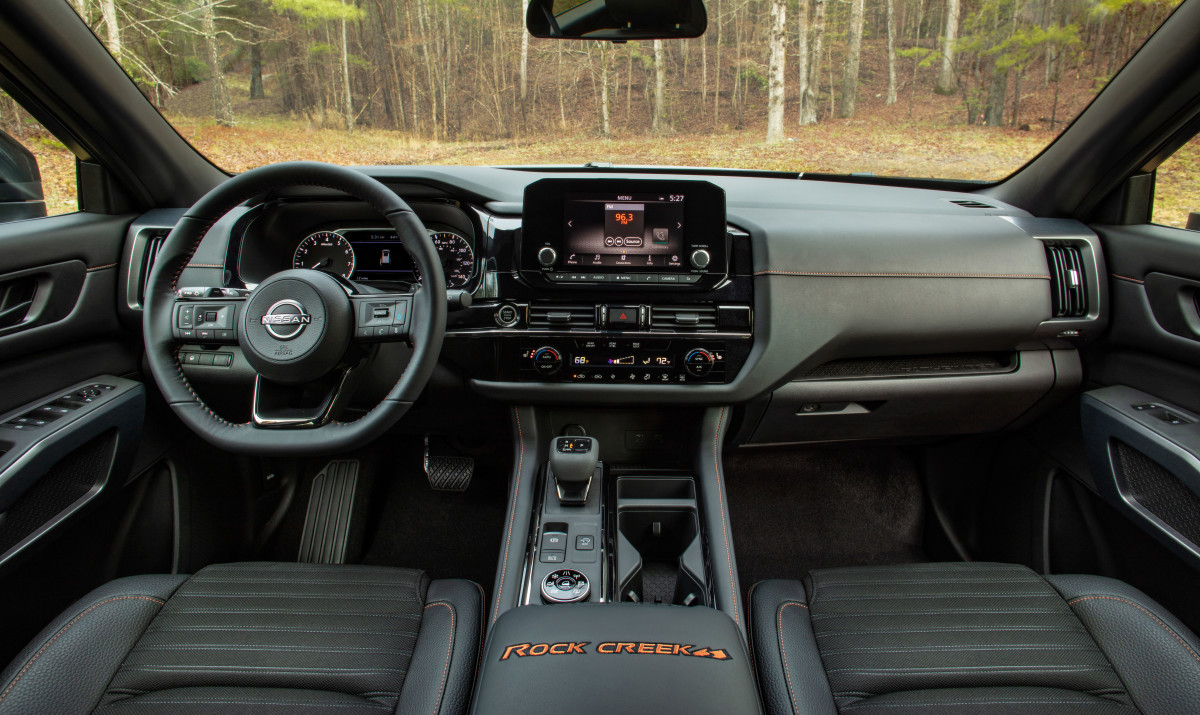
View the 2 images of this gallery on the
original article
The center console in the Nissan is much more off-road focused, too. The 4WD controls are there, featured as a dial, as well as the terrain selector. The Toyota’s center console controls are the same, with a Trail mode and a terrain selector (though noticeably fewer modes than the Pathfinder), so it’s definitely versatile enough to help drivers feel more prepared for the unexpected, but it’s not built for the wild like the Pathfinder is.
Pricing is a pretty big separator
Looking at what the Pathfinder has to offer, you might assume that the Nissan was the more expensive option of the two, but you’d be wrong. Even though the Toyota doesn’t have as high of a towing rating, or a V6, or a full-time “intelligent” 4WD system that doubles as an AWD system until the diffs are locked, has a smaller third-row, and comes with a smaller engine, the Toyota is more expensive. The gas-only AWD version ranges from $42,745 (subtract $1,600 for the FWD setup) to $53,720 for the Platinum trim with standard AWD. The hybrid models are obviously more expensive.
The Rock Creek is a trim level of the Nissan Pathfinder, so the only price range is from the dealership. The MSRP for the Rock Creek is $44,490, which is higher than the AWD Toyota’s starting price, but noticeably lower than the maximum price of the Platinum. At that price, it also comes with a tubular roof rack from the factory and trim-specific 18-inch wheels.
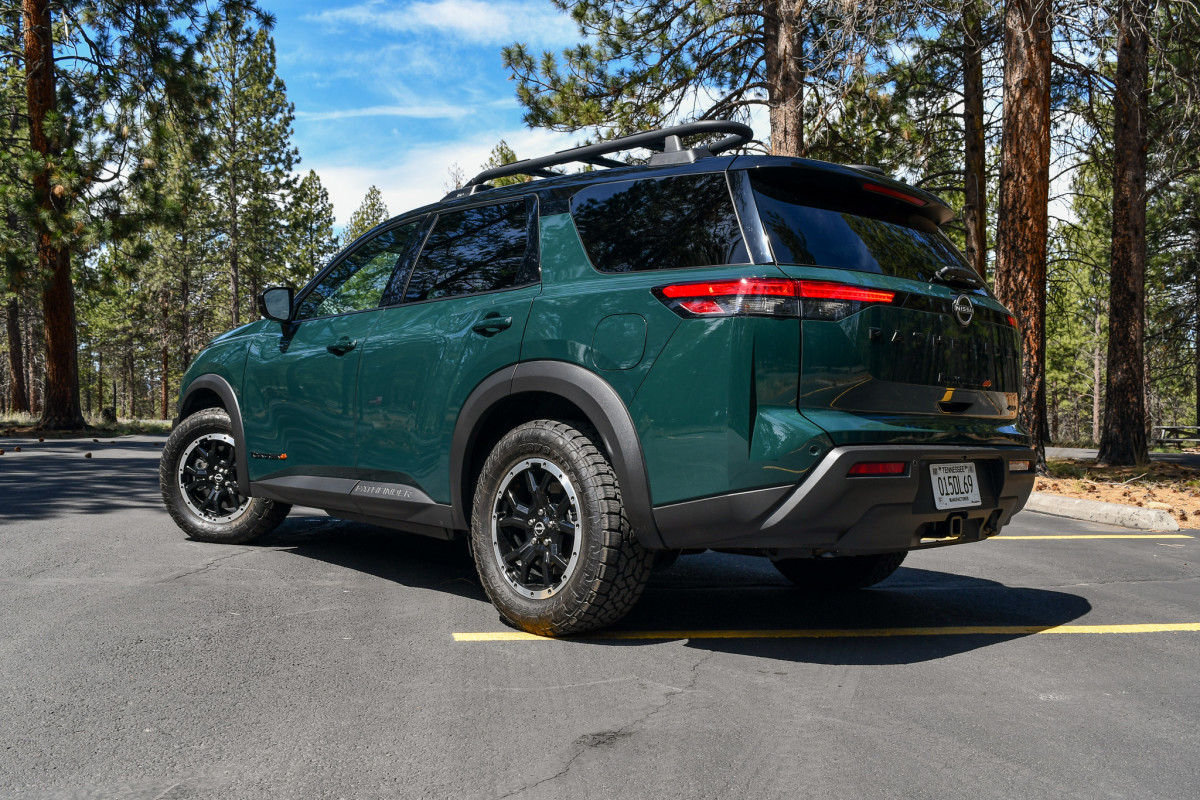
The Pathfinder is much more rustic and barebones, lacking many of the technologies that the Toyota has, but the Rock Creek’s identity is centered around its robust 4WD system. After all, the name “Rock Creek” is rumored to be a nod to the recreation area that’s close to the assembly plant in Tennessee. The Toyota Highlander is a city slicker that
can
handle the wilds, but it isn’t designed around its abilities.
Final thoughts
When I think of these two, I separate them by what they were built to do. The Highlander was built to be pretty good at just about everything, but it excels at fitting into your daily routine, with an AWD system to help out just in case you run into nasty weather while you’re heading to your son’s field trip or the grocery store. That’s especially true for the hybrid version. The Rock Creek, however, was built to go off-road and tow, as well as execute daily tasks effectively, but not as effectively as the Highlander.
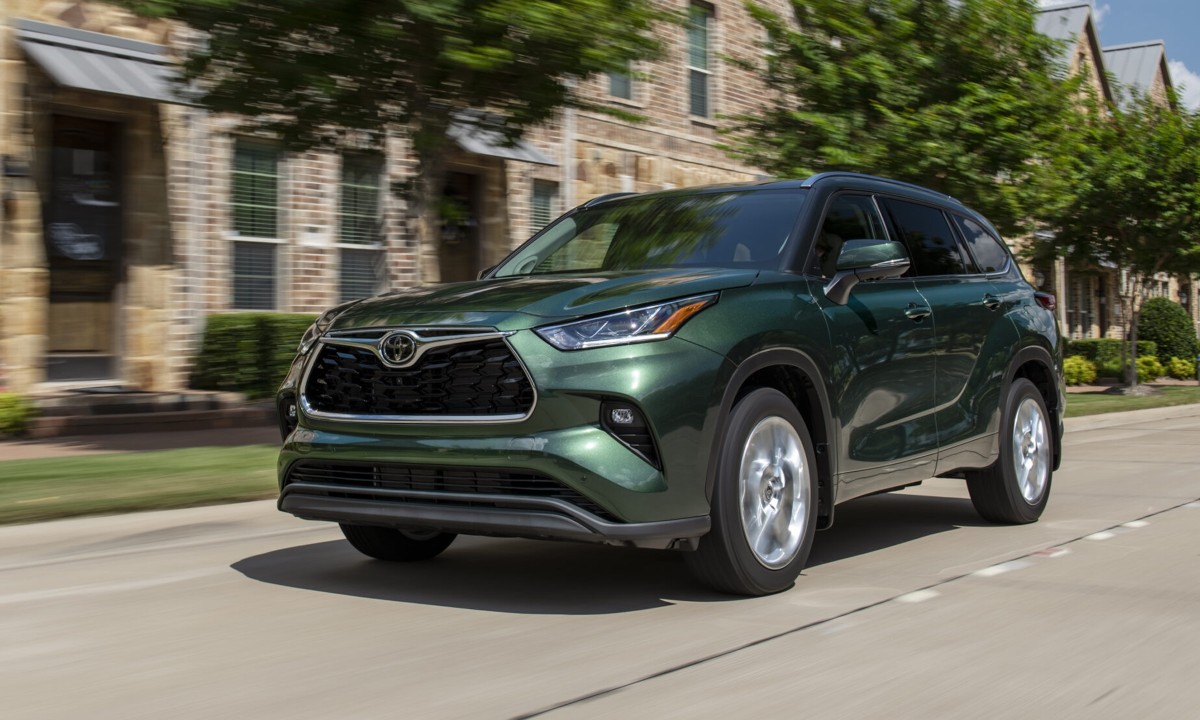
For the pricing, both are hard to beat. The Highlander is comfortable and adaptable, while the Rock Creek was excellent off-road, and otherwise just “okay” otherwise. Mileage wasn’t great around town, and it was easy to get my toddlers’ car seats in, but the lack of technology could be a pain point for some. I didn’t mind the lack of wireless Android Auto or Apple CarPlay, but I could see that being a dealbreaker for a lot of curious buyers. Both have exceptional safety ratings and a passable third row, both are reliable, and float around the same price.
Therefore, if you plan on off-roading pretty avidly and need something that can tow a trailer, your dirt bikes, or an ATV, the Rock Creek is the obvious winner. If you want something that can handle trails on a just-in-case basis and plan to do a lot of commuting or daily errands, the Toyota is the smarter horse to bet on.







